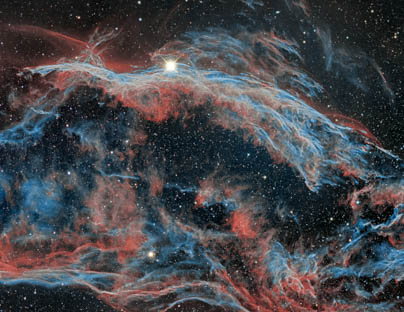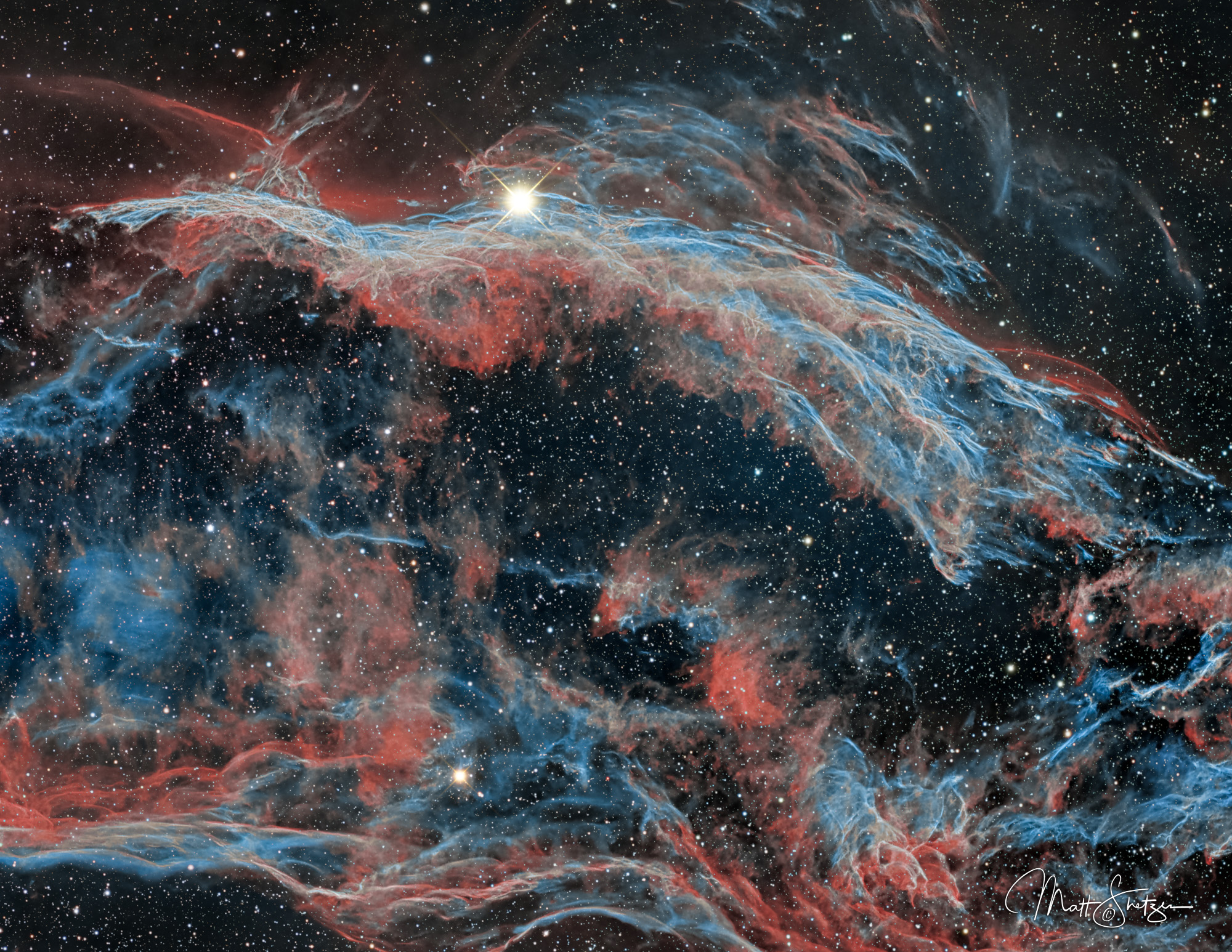For astrophotographers, the Veil Nebula is like a celestial playground—rich in detail, color, and structure, offering endless opportunities for deep-sky exploration. Its vast, filamentary nature means that every corner holds a new composition, a new angle where light and form interact in subtle, haunting ways. Whether capturing the full sweep of its arcs or zooming in on tighter formations like the Pickering’s Triangle or Witch’s Broom, the Veil provides both challenge and reward. Long exposure reveals the delicate tracery of glowing gases, and with the right filters, the nebula transforms into a painter’s palette suspended in space.
Spending nights with the Veil is an exercise in patience and curiosity. Framing its sweeping structures takes care, especially given how spread out it is across the sky. Narrowband imaging brings out its finest textures—each faint thread of oxygen or sulfur starting to glow with ghostly brilliance under hours of careful integration. The interplay of reds, blues, and greens becomes almost addictive, and the deeper one digs, the more the nebula offers up: soft knots of turbulence, ripples along the filaments, arcs that seem to move in slow motion when processed with love.
There’s a strange intimacy in capturing something so ancient and vast. Every image of the Veil becomes a personal echo of a supernova that happened before recorded history, a modern gaze on an ancient event. Astrophotographers often return to it year after year, each time refining their process, discovering new detail, or just basking in the quiet poetry of its form. The Veil doesn’t just appear in images—it lingers, woven into the minds and memories of those who chase its light through the darkness.
| Object | Veil Nebula |
| Link | https://www.shetzers.com/veil-nebula-ngc-6960/ |
| Wiki Link | https://en.wikipedia.org/wiki/Veil_Nebula |
| Hemisphere | Northern |
| Constellation | Cygnus |
| Other Names contained in image | NGC 6960 |
| Imaging telescopes or lenses | Takahashi FSQ -106ED4 |
| Imaging cameras | QHY268M |
| Mounts | Software Bisque Paramount MYT |
| Focal reducers | None |
| Software | Software Bisque The Sky X, N.I.N.A., PHD Lab PHD2, Viking, PixInsight, Photoshop, Lightroom, StarSpikes |
| Filters | Astrodon LRGB Gen2 E-Series Tru-Balance 36mm unmounted. Chroma Technology Narrowband 3nm Ha, SII, OIII – 36mm Unmounted |
| Accessories | Moonlite NightCrawler 35 focuser, Maxdome II, Digital Loggers Pro Switch, Sky Alert Weather Station, Pegagsus Ultimate Powerbox v2, Starlight Xpress filter wheel. |
| Guiding Telescope or Lenses | Orion 60mm Guide Scope |
| Guiding Camera | ZWO ASI290MM Mini |
| Imaging Dates | 6/16/22,7/8/22,7/9/22,8/17/22,8/18/22,8/23/22,8/24/22,8/29/22,8/30/22,8/31/22,9/1/22,9/2/22,9/3/22,9/4/22,9/5/22 |
| Frames | 2 Panels Panel 1 Red: 8×180″ (0.24h) Gain 25, Photographic Mode, Temp -10C, Bin 1×1 Green: 10×180″ (0.5h) Gain 25, Photographic Mode, Temp -10C, Bin 1×1 Blue:10×180″ (0.5h) Gain 25, Photographic Mode, Temp -10C, Bin 1×1 Ha: 66×600″ (11.0h) Gain 60, High Gain Mode, Temp -10C, Bin 1×1 OII: 47×600″ (7.8h) Gain 60, High Gain Mode, Temp -10C, Bin 1×1 Panel 2 |
| Integration | 38h 45m |
| Darks | 50 |
| Flats | 20 per Filter |
| Flat Darks | 40 |
| Bortle Dark-Sky Scale: | 2 |
| RA center | 311.88691 |
| DEC center | 30.86446 |
| Pixel scale | 3.76 |
| Resolution | 6280 x 4210 |
| Locations | Sirus 3.5m Observatory, Carbondale Colorado |
| Data source | Backyard |
| Seeing | Average |
| Post Processing Techniques | PixInsight to Photoshop to Lightroom |
| Median FWHM Pixels | R 2.194, G 2.129, B 2.313, H 2.289, O 2.146 |


